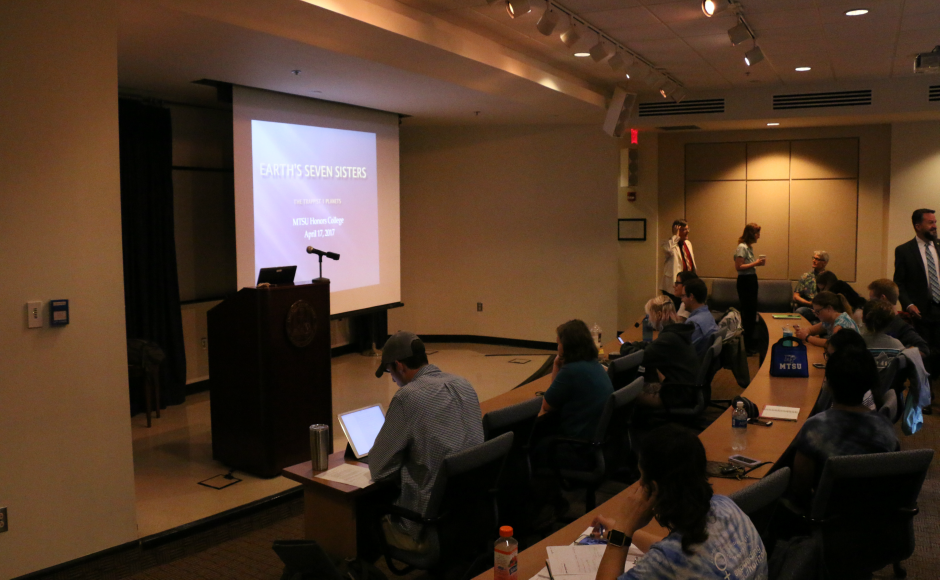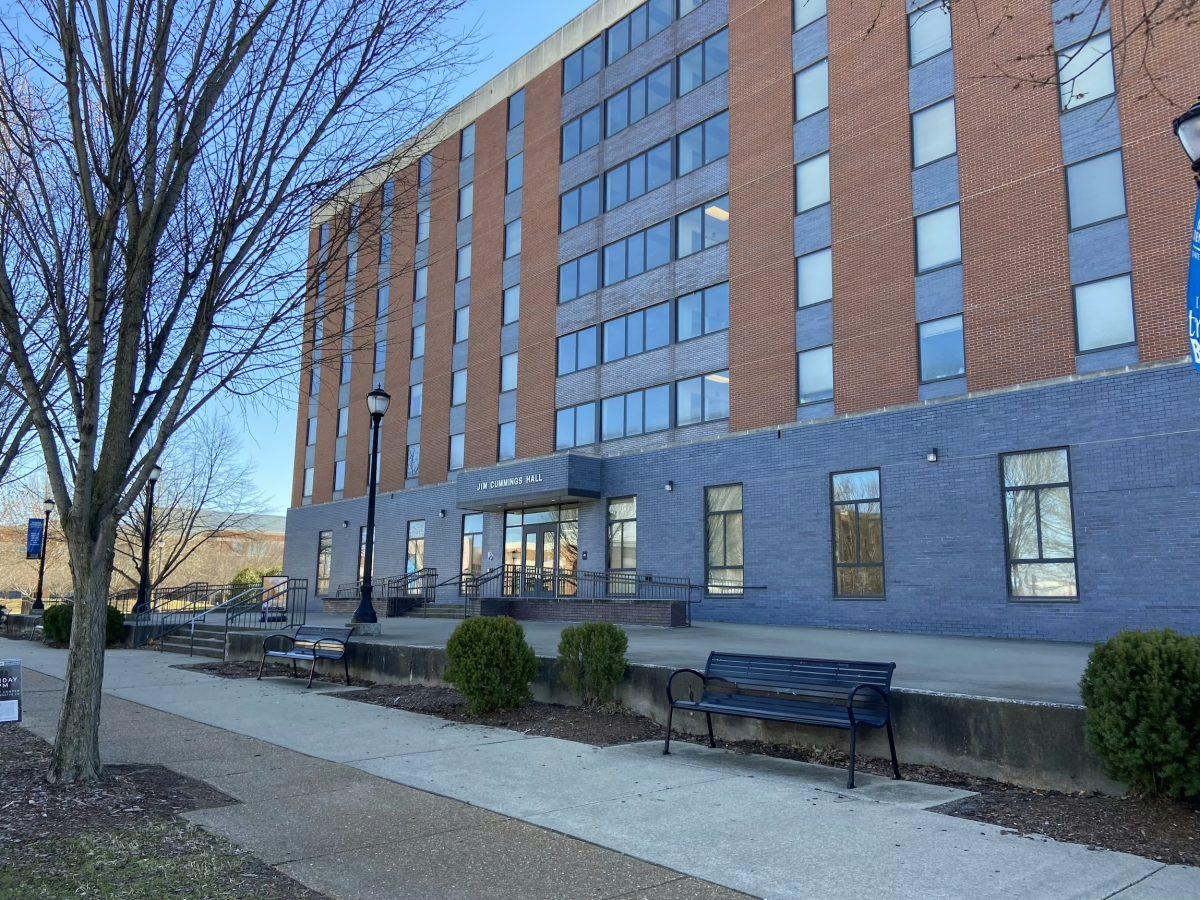Photo and Story by Caleb Revill / Contributing Writer
Students were encouraged to shoot for the stars by MTSU Professor Eric Klumpe at his lecture on the TRAPPIST-1 star and planets on Monday.
The lecture was held in the Honors Building on campus. Visiting guests ranged from students to faculty, including Dean of the University Honors College John Vile.
Klumpe began his lecture with a reference to the children’s book “You Can Be Anything!” by Charles Schulz. He explained that the book encourages children to think big when contemplating their future.
“What if your college advisor said this to you?” Klumpe asked, referring to the title of the book.
Afterward, Klumpe spoke about the TRAPPIST-South, otherwise known as the Transiting Planets and Planetesimals Small Telescope-South.
The TRAPPIST-South is a telescope located at the La Silla Observatory in Chile. It serves as a tool for astronomers to detect “exoplanets,” or planets that orbit a star outside of our solar system.
Klumpe explained that the telescope searches for transiting planets. Transiting planets are planets that can be seen traveling across the disk a star, creating a silhouette of the planet.
One of the ways transiting planets can be identified is by seeing a drop of light output from the star being observed. When the planet passes the space between the star and the telescope observing it, the star gives off a lesser but recordable amount of light.
One particular star discovered by TRAPPIST-South was named TRAPPIST-1. There are 7 planets within the TRAPPIST-1 system that have also been identified by TRAPPIST-South.
Klumpe explained that the planets were named TRAPPIST b to TRAPPIST h and that the alphabetical character “a” was not to be used when identifying the planets.
As the lecture proceeded, Klumpe raised the question: “What is an earth-like planet?” He elaborated on what our current technology allows us to measure when it comes to answering this question.
We can currently measure the size of the planet in question, the type of star that the planet orbits and the distance between the planet and the star that it orbits.
Klumpe began to speak about the importance of water for earth-like planets to be inhabitable.
“Water is regarded as the best medium to support biochemical reactions associated with living systems,” Klumpe said.
Klumpe then elaborated that although water is necessary for planets to harbor life, it is not necessarily sufficient. He then briefly mentioned the media’s over-excitement towards the possibility of life on other planets that have water.
Klumpe also noted that planets with a stable water cycle, where water existed in all three phases, had a higher probability of habitability than planets with water stuck in one phase.
In reference to the TRAPPIST-1 star and its planets, Klumpe transitioned to speaking about the habitability of the TRAPPIST planets in relation to their star.
Factors for the habitability of TRAPPIST planets included the size and heat of their star, as well as whether or not the planets lie within the habitability zone in their star’s orbit.
The habitability zone is an area in the orbit around a star that meets the right conditions for life to possibly reside on planets located there.
“The habitability zone for water is very thin and very selective,” Klumpe said.
Klumpe explained that because TRAPPIST-1 is significantly smaller than the size of the Sun. The habitability zone for planets in that system is much tighter than that of our own.
Towards the end of the lecture, Klumpe explained that of the seven planets orbiting TRAPPIST-1, three fall within the habitability zone.
Despite this, Klumpe explained that Venus is currently the best “Earth 2.0” when talking about habitability in comparison to the TRAPPIST planets.
Follow Caleb Revill on Twitter at @Calbnet.
For more news, follow us at www.mtsusidelines.com, on Facebook at MTSU Sidelines and on Twitter at @Sidelines_News.
To contact News Editor Brinley Hineman, email newseditor@mtsusidelines.com.








